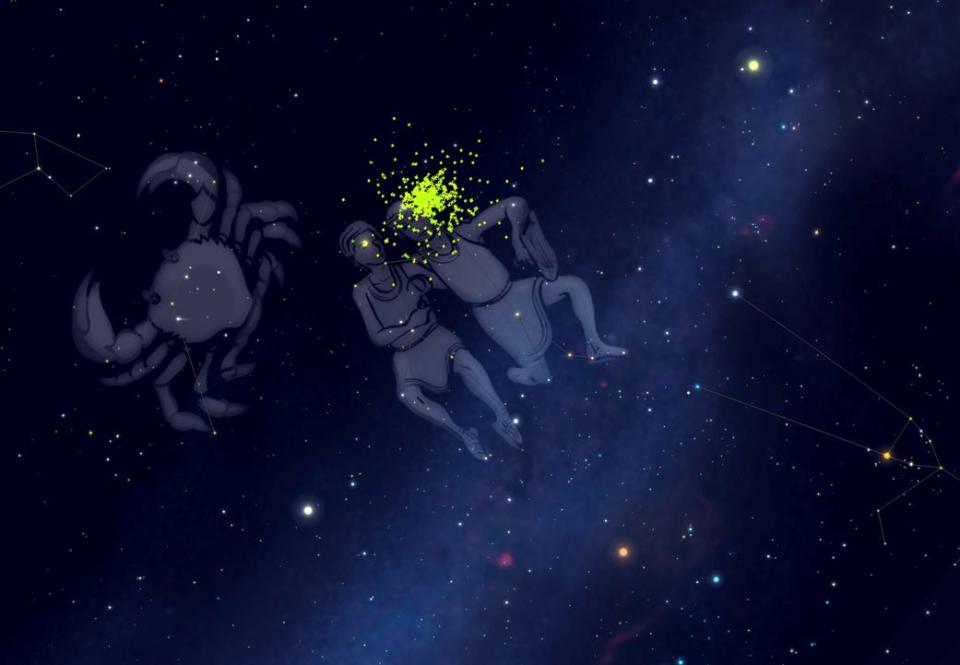How best to observe Geminids meteor shower this week in Delaware Valley
The Geminids meteor shower — considered to be among the most spectacular meteor showers of the year — will be visible to the Delaware Valley both Wednesday night and Thursday night.
The Geminids meteor showers appear in the night sky every December.
According to NASA, the Geminids meteor showers are currently active until Dec. 17 and will peak Wednesday night.
Here's everything else to know about the Geminids meteor shower, and the best times to view it.
Viewing conditions Wednesday and Thursday night for the Geminids meteor shower
Ray Martin, a meteorologist with the National Weather Service in Mount Holly, said conditions should be near-perfect for stargazing.
"Right now, Wednesday night looks pretty good for viewing, with just a few passing clouds over the northern part of Bucks County," Martin said. "Same thing Thursday night, with lots of clear skies, and maybe a passing cloud or two.
"Both nights look pretty good overall for viewing."
The official forecast from the weather service further details the viewing conditions:
Wednesday night: Clear, with a low around 25. Northwest wind 5 to 10 mph.
Thursday overnight: Clear, with a low around 27. Southwest wind 5 to 10 mph.
How to observe the Geminids meteor shower on Wednesday and Thursday night

"As you enter the Southern Hemisphere and move towards the South Pole, the altitude of the Geminid radiant – the celestial point in the sky where the Geminid meteors appear to originate – gets lower and lower above the horizon," read a portion of NASA's readout on the Geminids meteor shower. "Thus, observers in these locations see fewer Geminids than their northern counterparts.
"Besides the weather, the phase of the Moon is a major factor in determining whether a meteor shower will have good rates during any given year."
Though the shower is best viewed during the night and predawn hours, activity typically begins around 9 or 10 p.m., according to NASA.
Best spots for observing meteor showers: Looking up: the best parks in the region to observe comets, meteor showers
To view the Geminids meteor shower, NASA suggests finding an area away from city lights or street lights, and of course, prepare for low temperatures.
Viewers should lie flat on your back with feet facing south and look up, taking in as much of the sky as possible. NASA also owes that your eyes will adjust to the dark after about 30 minutes.
The Geminids meteor shower should last until dawn.
All about National Meteorite Day: Let's celebrate National Meteor Day
More about the Geminids meteor shower
The Geminids may not be active during the warm, inviting summertime like its Perseid counterpart, but many astronomers promise a dazzling cosmic show is in store for those willing to brave chilly winter conditions.
Considered one of the strongest and most consistent meteor showers, peak Geminids could feature as many as 120 meteor trails per hour whizzing across the night sky, according NASA.
National Geminids primer: The best time to see the Geminid meteor shower is this week. Here's how to watch.
Named for the constellation Gemini, the shower has a reputation for being bright and intensely colored, capable of falling slowly and even producing fireballs, according to the American Meteor Society. Many of the shooting stars appear as yellowish streaks.
Because of minimal moonlight, those in rural areas could see more than one meteor trail a minute this year.
This article originally appeared on Bucks County Courier Times: All about the Geminids meteor shower and how to observe it

